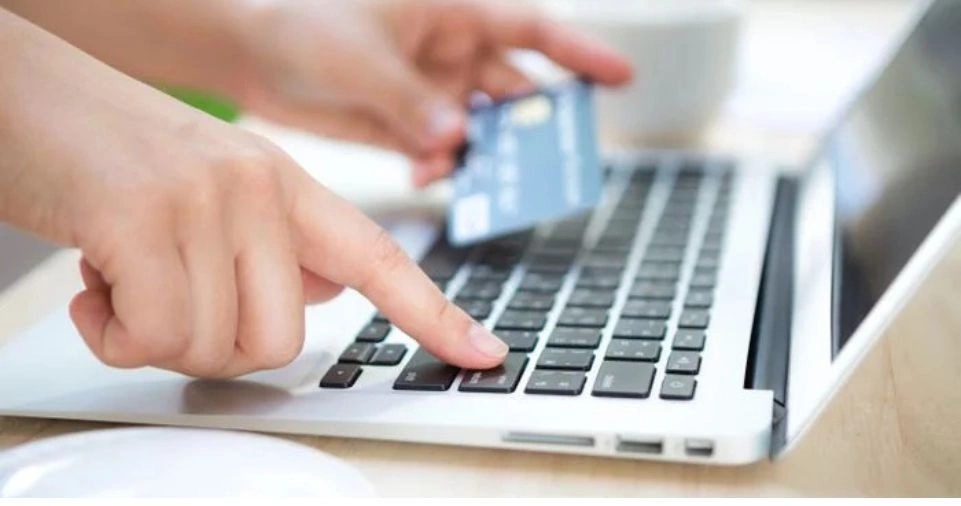Keep Your Online Accounts Secure is crucial in today’s digital world, where cyber threats are ever-evolving.
Protecting your personal and financial information online requires a combination of strong passwords, multi-layered security protocols, and proactive monitoring.
With hackers constantly finding new ways to exploit vulnerabilities, securing your online accounts has never been more important.
From enabling two-factor authentication (2FA) to recognizing phishing attempts, each step you take significantly reduces the risk of unauthorized access.
This guide will outline the best practices, tools, and strategies you can use to safeguard your accounts and ensure your data remains protected against threats.
Don’t leave your online security to chance—take action today to protect your digital presence.
Why is Account Security Important?
Cybercriminals use various tactics to gain access to your online accounts, including phishing scams, brute-force attacks, and data breaches.
A compromised account can lead to identity theft, financial loss, and a variety of other harmful consequences.
Protecting your online accounts helps to safeguard your sensitive data and ensures you remain in control of your digital life.
Common Types of Cyber Threats
- Phishing Attacks: Fraudulent emails or websites that trick you into revealing your personal information.
- Password Cracking: Tools and techniques used by hackers to guess your password.
- Keylogging: Malicious software that records your keystrokes to steal sensitive information.
- Malware: Software that can gain unauthorized access to your devices and accounts.
- Data Breaches: When large-scale data theft exposes personal information, including account credentials.
ALSO READ: Roch Daigle Net Worth
Steps to Secure Your Online Accounts

There are several key strategies you can implement to ensure your online accounts are secure. Here are the most effective ones:
Use Strong, Unique Passwords
The first line of defense is creating a strong password for each of your accounts. Avoid using easily guessable information such as your name, birthdate, or simple sequences like “123456.” Instead, follow these best practices:
- Length: Use at least 12 characters.
- Complexity: Combine uppercase and lowercase letters, numbers, and special characters.
- Avoid Reuse: Never use the same password across multiple accounts.
- Password Manager: Consider using a password manager to store and generate complex passwords securely.
Enable Two-Factor Authentication (2FA)
Two-factor authentication (2FA) adds an extra layer of security by requiring you to verify your identity in two ways: something you know (your password) and something you have (a temporary code sent to your phone or email).
Enabling 2FA can drastically reduce the chances of unauthorized access to your account. Here are some common methods of 2FA:
- SMS codes: A one-time code sent via text message.
- Authenticator apps: Apps like Google Authenticator or Authy generate a time-sensitive code.
- Biometric authentication: Fingerprint or facial recognition.
- Security keys: A physical device you use to authenticate.
Keep Your Software Updated
Software updates often contain important security patches that protect you from vulnerabilities.
Whether it’s your operating system, web browser, or apps, always ensure they’re up to date.
Cybercriminals often exploit unpatched security holes, so being proactive about updates can prevent many attacks.
Beware of Phishing Scams
Phishing scams are one of the most common ways hackers trick people into giving away their login credentials.
These scams can come in the form of emails, phone calls, or fake websites that look identical to legitimate ones. To protect yourself from phishing:
- Don’t click on links from unknown sources.
- Always verify the sender’s email address and check for any signs of suspicious activity.
- Use an email service that automatically detects phishing emails.
- Always check for HTTPS in the website URL, especially when entering sensitive information.
Monitor Account Activity
Regularly checking your account activity can help you spot any suspicious activity before it gets out of hand.
Many platforms, such as Gmail and Facebook, offer a log of recent login attempts and devices used.
If you see something unfamiliar, take immediate action by changing your password and enabling 2FA.
Use Secure Networks
Never access your sensitive accounts over an unsecured Wi-Fi network. Public Wi-Fi in coffee shops or airports is often not encrypted, which means your data can be intercepted by malicious actors.
When possible, use a Virtual Private Network (VPN) to encrypt your internet connection. A VPN helps protect your browsing and personal information when using unsecured networks.
Enable Account Recovery Options
In case you forget your password or someone else gains access to your account, having recovery options set up is essential. These might include:
- Backup email: A secondary email address you can use to receive recovery links.
- Security questions: Answer questions that only you know.
- Phone number: A recovery code sent via SMS.
Review App Permissions Regularly
Many apps ask for access to sensitive information, such as your contacts, location, or camera.
Regularly review the permissions granted to apps on your devices and revoke access for any that you no longer use or trust. This minimizes the risk of apps exposing your personal data.
Be Careful with Social Media
Social media accounts are often targeted by hackers because they can provide a wealth of personal information. To secure your social media accounts:
- Use unique passwords and 2FA.
- Avoid sharing personal details like your full date of birth or address.
- Check your privacy settings and limit who can see your posts and information.
- Beware of links or friend requests from unknown people.
ALSO READ: Valerie Thomas Net Worth
How to Set Up 2FA and Additional Security Features
If you’re unsure where to start, here’s a step-by-step guide for setting up two-factor authentication (2FA) on some popular platforms:
| Platform | How to Enable 2FA |
|---|---|
| Go to Google Account settings > Security > 2-Step Verification > Get Started and follow the prompts. | |
| Go to Settings > Security and Login > Two-Factor Authentication > Edit and choose your preferred method. | |
| Go to Settings and Privacy > Security and Account Access > Security > Two-Factor Authentication. | |
| Go to Settings > Security > Two-Factor Authentication > Enable. | |
| Apple ID | Go to Settings > [Your Name] > Password & Security > Two-Factor Authentication. |
| Amazon | Go to Your Account > Login & Security > Two-Step Verification > Get Started. |
What to Do if Your Account Gets Compromised

Even with the best precautions, there’s always a chance that an account could be compromised. If you suspect your account has been hacked, follow these steps immediately:
- Change Your Password: As quickly as possible, change the password for your affected account. Choose a new, unique password.
- Enable 2FA: If you haven’t already, enable two-factor authentication to add an extra layer of protection.
- Check Account Activity: Look for any unauthorized transactions, changes, or logins.
- Alert Your Contacts: If your email or social media account was compromised, inform your contacts to prevent further scams.
- Report the Incident: Many services offer support for reporting account theft or fraud. File a report to prevent further issues.
Additional Tips for Advanced Users
For those who want to take their online security to the next level, consider these additional tips:
- Use Encryption: Encrypt sensitive files or emails to ensure only authorized parties can read them.
- Use Hardware Security Keys: Devices like Yubikey provide physical security and are nearly impossible to hack.
- Keep Your Backup Data Secure: If you back up your data, ensure its encrypted and stored in a secure location.
ALSO READ: How to Start a Small Business on a Budget?
Final Thoughts
Staying vigilant and proactive about online security is crucial in today’s world. By using strong, unique passwords, enabling two-factor authentication, and staying aware of potential threats, you can significantly reduce the risk of your accounts being hacked.
Security is not a one-time effort but an ongoing process. Make it a habit to review your account security settings and adapt to new threats as they arise.






